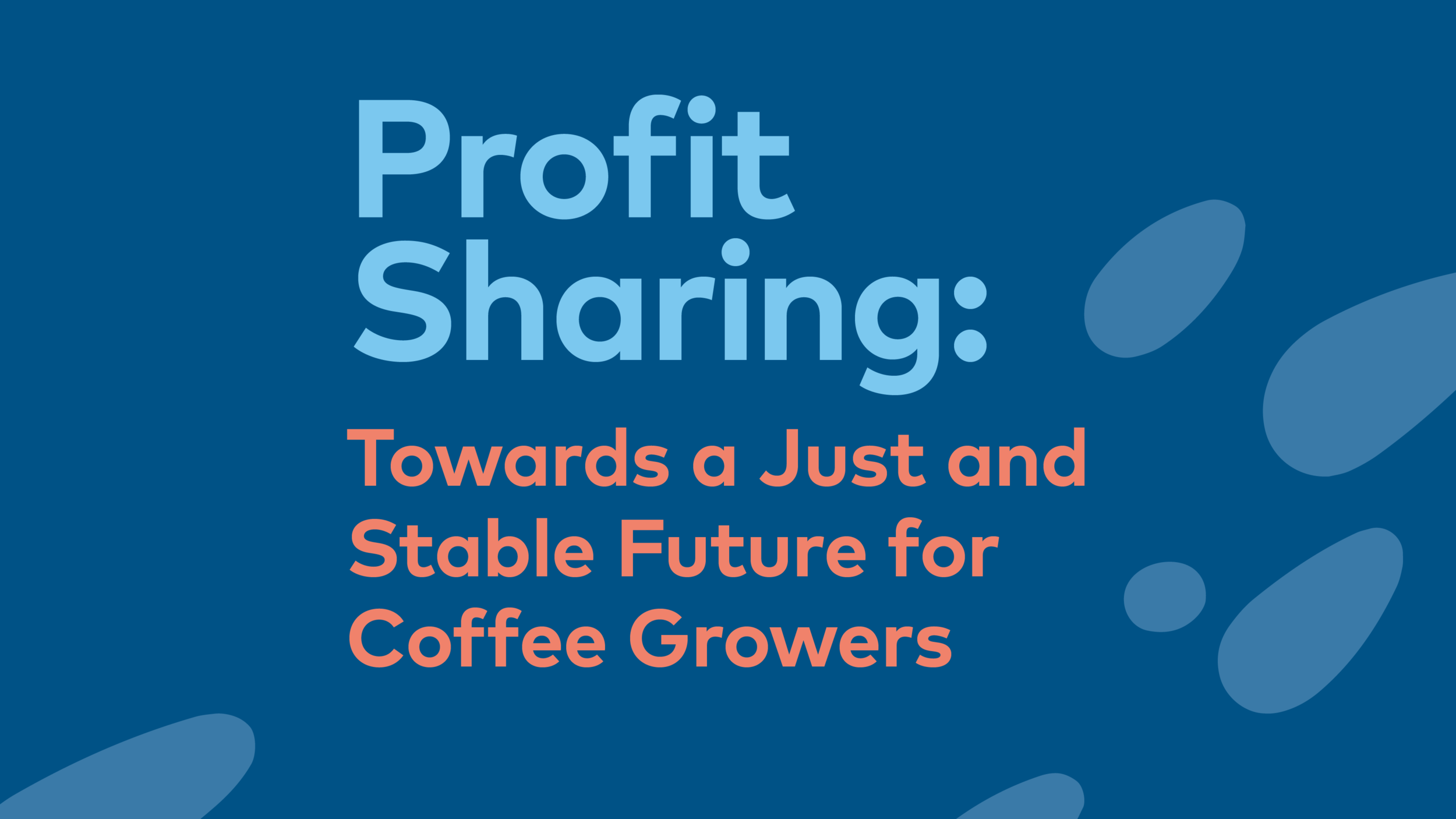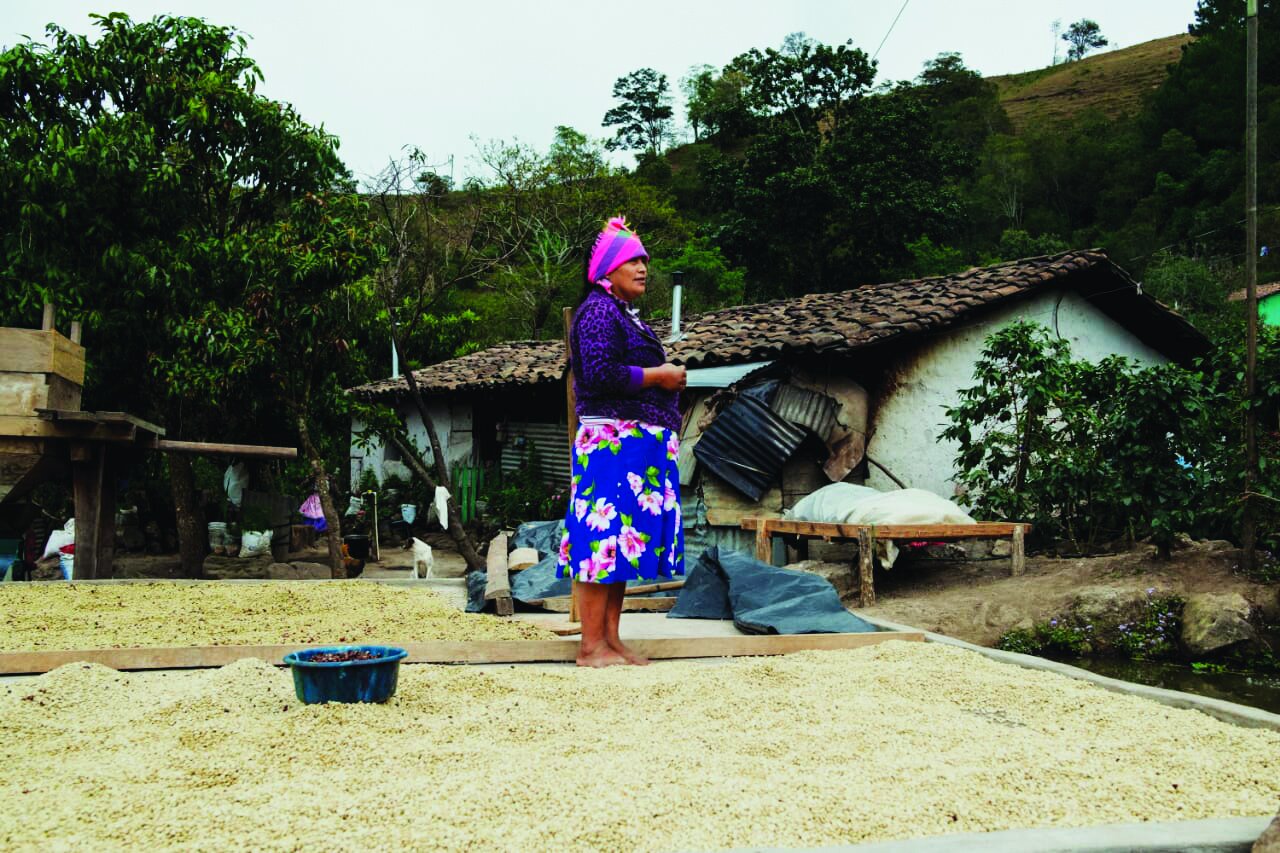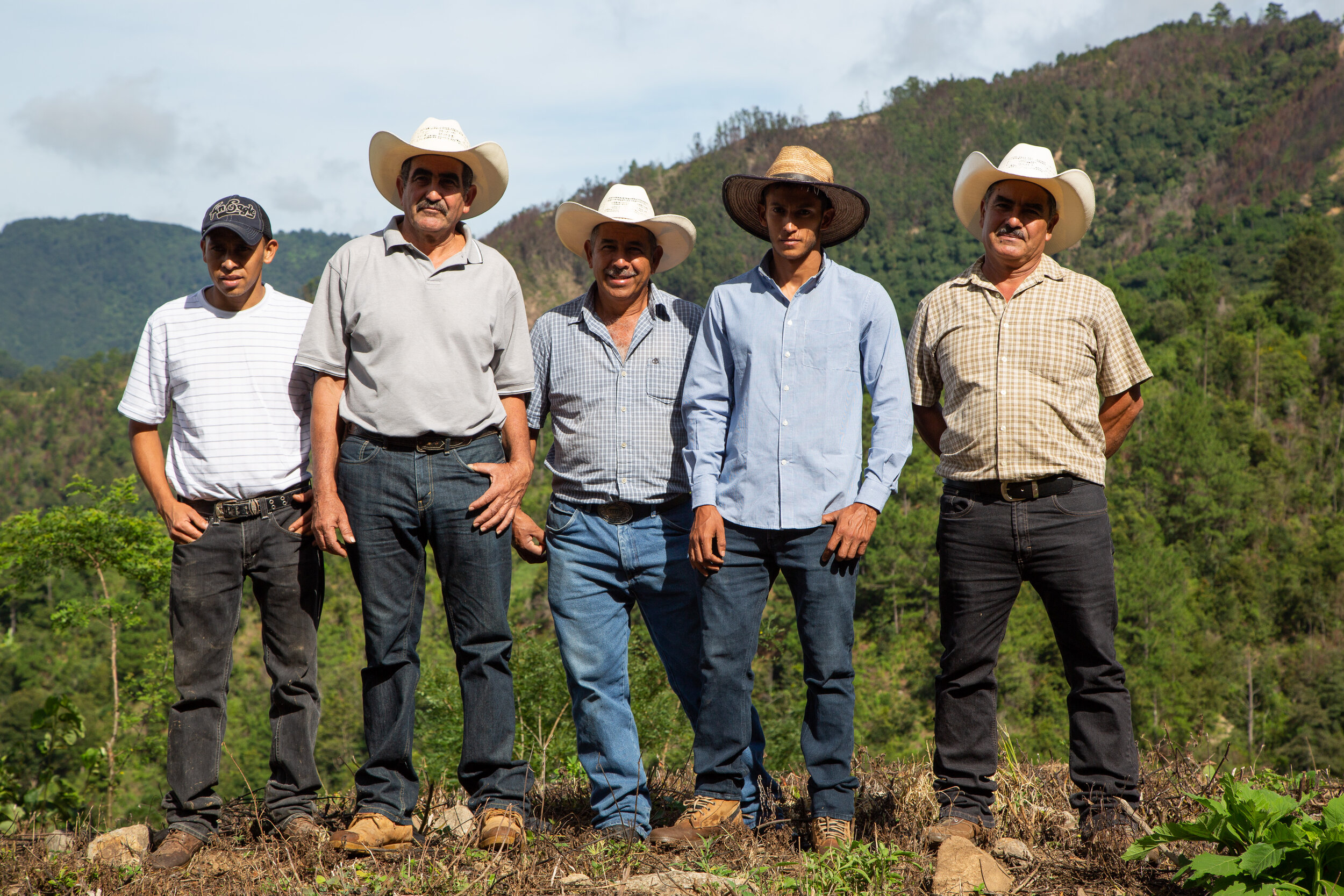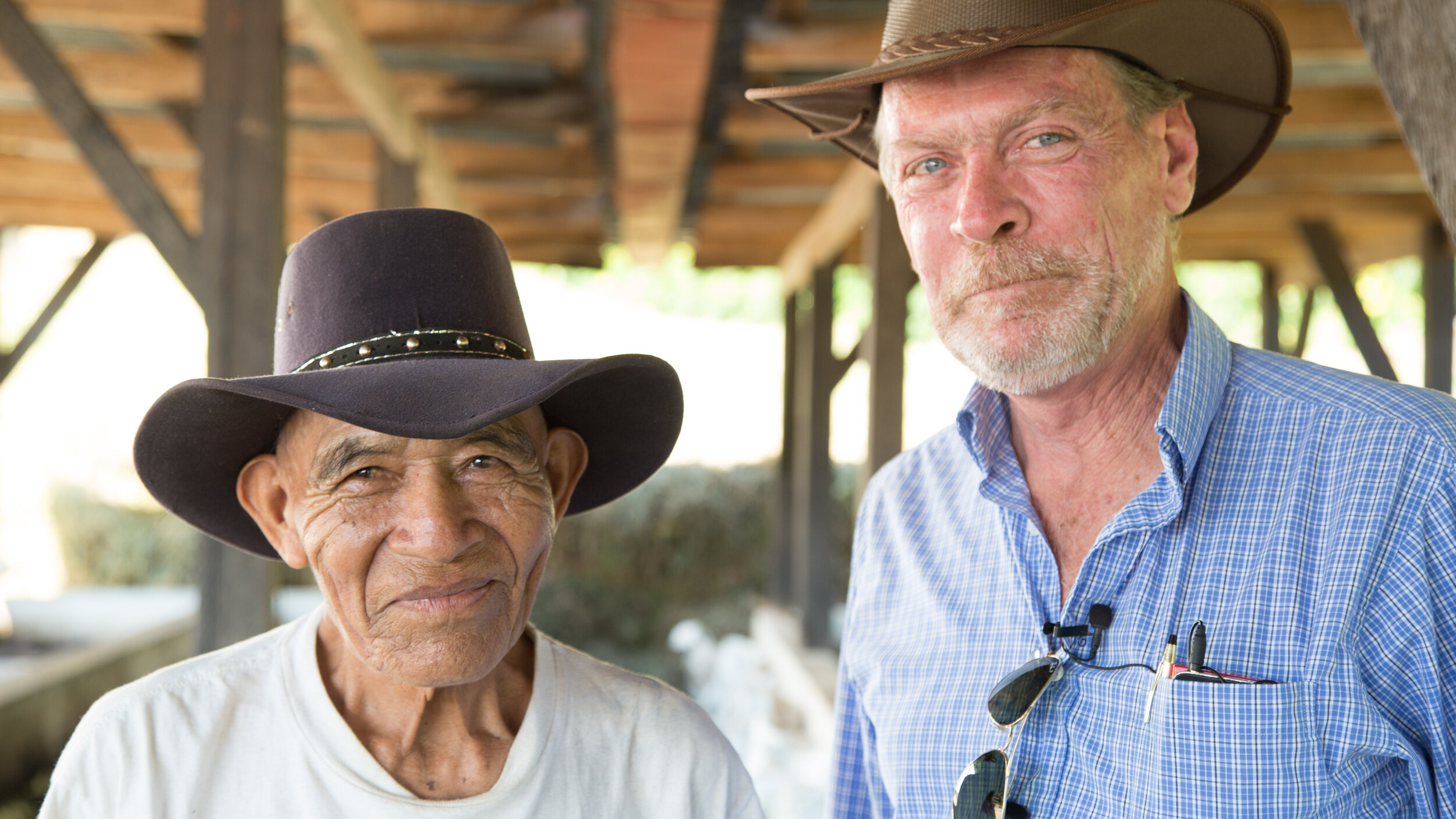Profit Sharing: Towards a Just and Stable Future for Coffee Growers | 25, Issue 14
The most recent price crisis (2018 to present) inspired a fresh wave of conversations rethinking how green coffee is bought and sold. Even radical ideas, like pricing coffee independently of its value on the commodities trading market, are on the table.
Researchers Dr. JANINA GRABS and Dr. ELIZABETH A. BENNETT explore profit sharing with suppliers as an innovative way to secure a more just and stable future for coffee growers and, thus, the entire supply chain.
Traditionally, companies “buy low and sell high” in an effort to extract the highest possible value and maximize profits. This approach transforms potentially collaborative relationships into a zero-sum game: For me to gain, you must lose. In coffee, this model squeezes suppliers and exacerbates tensions around economic inequality. It also creates vulnerabilities which may jeopardize the stability of the coffee supply chain. There must be a better way forward.
Fortunately, coffee value chains have long been a hotbed of innovation. Fair trade, direct trade, and farmer cooperatives have all played important roles in shaping the industry. These innovations support some farmers in some contexts, but also have limitations. For example, when the supply of “ethical” coffee outstrips demand, producers may receive lower prices or resort to selling coffee on conventional markets. Even when farmers do receive better prices, those prices may only be a fraction of the value added—the rest of the profits land somewhere else in the supply chain. Many companies and NGOs are working hard to improve these systems and create new ones—like profit sharing.
Profit Sharing in Other Contexts
Profit sharing emerged in the nineteenth century as a way for employers to address workers’ frustrations about low wages and incentivize labor productivity. In this context, workers receive a share of the company’s annual profits in addition to their baseline salaries. Today, profit sharing is still used to enhance company performance. But research suggests that sharing profits can also generate other benefits—like reducing conflict, generating a sense of ownership, increasing loyalty, and fostering reciprocal relationships among workers.
Could profit sharing contribute to a more just and stable coffee supply chain? The economic idea is simple: As coffee moves from farm to cup, it gains value. Instead of allowing a few businesses in the value chain to capture (keep) most of that value (profit), it can be distributed back to the growers who provide green beans. But how? And … does it work? To answer these questions, we studied two companies that both share profits: Catracha Coffee Company and Thrive Farmers International.
Profit Sharing Comes to Coffee
Catracha and Thrive are among the first companies applying profit sharing to the coffee sector. They are both for-profit companies with social missions, or “social enterprises.” They aim to improve the income and wellbeing of coffee suppliers by buying coffee in Latin America and selling it to roasters in the United States. Catracha is tiny, buying coffee from a few dozen small farmers in one community in Honduras. Thrive is larger, exporting millions of pounds of green coffee from eight countries and selling to major corporations. Despite these differences, both companies have found that profit sharing allows them to distribute more value to farmers and pay the bills.
From left: Maria Dolores Blanco Martinez from Aguanqueterique, Santa Elena; Juana Alicia Lazo and Nectali Vasquez from Monte Copado, Santa Elena; the view from the drying patio at the home of Jan Benitez and Claudia Hernandez in Aguanqueterique, Santa Elena. Photos by Nahun Rodriguez (@nahunrodriguez.hn) on behalf of Catracha Coffee Company.
Catracha’s founder, Mayra Orellana-Powell, arrived at the profit-sharing model organically. It was 2012, her second year exporting coffee and first year turning a real profit. As she considered how to spend the US$10,000 in revenue (maybe a car?), she realized that the money Catracha earned truly wasn’t her own. She returned it to farmers as a mid-year “bonus.” Thrive co-founders Michael Jones and Ken Lander arrived at profit sharing after trial and error with a consignment-based business model. After a few years, they found that profit sharing was a better way to achieve their company’s mission to “empower farmers to thrive by taking them to market as partners.”
Profit Sharing in Practice
Despite their differences, both companies created very similar systems for sharing profits. The most obvious distinction from conventional practice is that they pay growers twice each year, instead of once! First, they pay growers for green coffee, offering a price that is at the top of the local market. By staying close to market prices, Catracha and Thrive aim to balance meeting their own financial needs against competing with other buyers to purchase the best quality beans. Second, after processing the coffee and selling it in the US, the companies calculate their profits and divide them among community investments, business development, and a second payment to growers. Often this “bonus” payment is issued just in time to purchase inputs for the next season, which can offset the need for loans.
The profit-sharing model is demand-driven. Companies don’t increase the volumes of coffee they purchase from each grower (or begin purchasing from new growers) until they are confident that these larger volumes will sell. This ensures that farmers receive stable, top of market prices and bonuses each year. It also allows the companies to make annual contributions to their non-profit sister organizations: The Catracha Community Fund and ThriveWorx. These organizations help coffee growing communities to realize community development goals they have for themselves, such as equipping young leaders, providing clean water, and organizing classes in permaculture and indigenous art, among others.
Catracha and Thrive have slightly different models, each aimed to benefit the farmers with whom they work. Catracha focuses on quality, typically only purchasing scores of 85 or higher. It offers training, incentivizes quality, provides small loans to improve processing infrastructure, and conducts research on how variables such as drying temperatures impact quality in their micro region. Thrive’s goal is to empower coffee growers by disrupting the conventional model in as many communities as possible. It sells both high-quality as well as mid-quality coffees (which would otherwise be sold on the commodity market) at high, stable prices through long-term contracts with major food companies, such as Chick-Fil-A. At times, working in high volumes allows Thrive to save on costs (e.g., shipping or insurance), and the extra profit is shared with farmers in a third payment.
From left (and left to right): Fredy Jovani Pineda Chajon, Héctor Hugo Santos Muñoz, Eduardo de Jesús Solares Gonzalez, Kevin Ancelmo del Cid, Julio Roberto Santos Muñoz (Farmer Association of Concepcion Pinula, Guatemala); Leandro Coy Mo and Ronald (Rony) Jorge Asensio Lueg from Finca Santa Ana La Huerta in Sierra de las Minas, Guatemala; The Morales Family of Guatemala (Rigoberto Morales Del Cid, Ivan Ricardo Morales Lechuga, Ivan Antonio Morales Del Cid, and María Eugenia de Morales). Photos provided by Thrive Farmers International.
Vinicio Gonzalez Solares, past-president and founding farmer of the Farmer Association of Concepcion Pinula, Guatemala (Vinicio and his community were the first small farming community of Thrive Farmers in Guatemala). Photo provided by Thrive Farmers International.
Does Profit Sharing Work?
Both companies keep annual records of the prices they pay to growers as well as local, C market, and Fairtrade cooperative prices. Reviewing their data, we find that profit sharing improved both price levels and stability. From 2012 to 2018, Catracha farmers on average received 60% more per pound than the local Fairtrade price. The price improvement was 47% in the worst year and 79% in the best year. From 2013 to 2017, Thrive’s farmers in the two largest sourcing regions (Guatemala and Costa Rica) on average received prices 43% higher than the Free on Board Fairtrade price, and 20% higher than the farmer’s next best option—the prices farmers would receive at the same point in time in their micro region for comparable quality beans, which are in general higher than the C market or Fairtrade baselines. Thrive prices were also remarkably stable, only showing around 1% change year-on-year, compared to changes of 25% to 70% in conventional and Fairtrade prices. The data show that farmers’ experiences differed by country and farm size. On average, cooperatives and small farmers (<15 ha) benefitted more than medium and large-scale farms. Clearly, profit sharing can improve prices and stability across contexts.
Profit sharing also offers significant benefits to trailblazing businesses. First and foremost, it fosters trust, partnership, and commitment without coercion or control. Producers do not sign long-term contracts and are always welcome to seek better options … yet, most farmers come back, creating more stability in the supply chains. As Ken explains: “[Since Thrive’s] price is generally higher and more stable year over year than other buyers in the market for the volumes of coffee that we are taking, we’ve built increasing trust among our farmers. And they have adjusted with us when demand has gone up or down based on the client.”
Profit sharing can also help companies to differentiate their coffee in a crowded “ethical” marketplace. Unlike some of the other innovations for distributing value, profit sharing is easy to explain and a simple price analysis provides straightforward evidence to show that it works.
Overall, profit sharing may be an excellent strategy for delivering more value to producers, stabilizing supply chains, and scaling “ethical” coffee in more a sustainable way. ◇
Dr. ELIZABETH A. BENNETT (ElizabethBennett[at]lclark.edu) is the Joseph M. Ha Associate Professor of International Affairs at Lewis & Clark College and a fellow at the Carr Center for Human Rights Policy at the Harvard Kennedy School. Dr. JANINA GRABS (jgrabs[at]ethz.ch) is a postdoctoral researcher in ETH Zurich’s Environmental Policy Lab and incoming Assistant Professor for Business and Society at ESADE Business School, Barcelona.
Readers can access the full-length case studies that serve as the base for this feature at janinagrabs.com/my-publications or elizabethannebennett.com/mypublications and or read the corresponding research paper here.
Applying a Profit Sharing Model to Your Own Business
Profit sharing is an idea and practice that can be applied at any stage of the coffee value chain. Interested? Here are some questions to begin:
How does your business create value? Identify the people, communities, and ecosystems that contribute to this value. How do you thank, compensate, or share with each of them?
When you pay for goods or services, how is that money distributed? If you want to know more, who could you ask to find out?
How well do you know your suppliers down to the farm level? How steady is your supply over the years? Could you benefit from a more robust supply chain and longer-term relationships with suppliers?
How do your customers or buyers talk about or respond to issues of inequality, poverty, and other socio-economic problems? What can you do to increase your communication (both listening and sharing) about these issues?
Thrive and Catracha divide profits among individual growers, communities, and company investments. How are your profits distributed? How does that distribution compare to your ideas about community and equity?
Imagine sharing profits with those who contribute to your company’s added value. What do you have to gain? What ideas or practices would require new approaches and creative thinking?
We hope you are as excited as we are about the release of 25, Issue 14. Both the print edition and the availability of these features across sca.coffee/news wouldn’t have been possible without our generous underwriting sponsors for this issue: Pacific Barista Series, BWT water+more, and Victoria Arduino. Thank you so much for your support! Learn more about our underwriters here.










